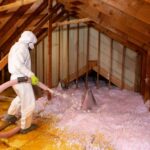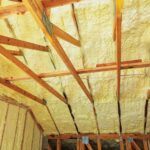Understanding how to inspect roof drainage systems is essential for homeowners aiming to maintain their property effectively. Poor drainage can lead to numerous problems, including water damage, leaks, and structural issues. This article will guide you through the process of examining your roof drainage system, ensuring it functions optimally and protects your home from potential damage.

Why Roof Drainage Systems are Important
Roof drainage systems play a crucial role in directing rainwater away from your home. A well-functioning system prevents water accumulation on the roof, which can lead to leaks and water damage. It also protects the foundation of your home by channeling water away from the base. Regular inspections help in identifying issues early, saving you from costly repairs in the future.
Components of a Roof Drainage System
To inspect a roof drainage system effectively, it’s important to understand its components. The main parts include gutters, downspouts, and drains. Each component works together to ensure proper water flow and drainage. Let’s explore each component in detail:
1. Gutters
Gutters are channels that collect rainwater from the roof and direct it towards the downspouts. They are usually made of aluminum, steel, or vinyl. Regular cleaning and inspection of gutters are necessary to prevent blockages and ensure smooth water flow.
2. Downspouts
Downspouts are vertical pipes that carry water from the gutters to the ground level. They must be free of obstructions to function properly. Check for clogs and ensure that the downspouts are securely attached to the house.
3. Roof Drains
Roof drains are typically found on flat roofs. They help in collecting and directing water away from the roof surface. Regular inspections can help identify any clogs or damage, ensuring efficient drainage.
Steps to Inspect Your Roof Drainage System
1. Safety First
Before starting your inspection, ensure your safety. Use a sturdy ladder and have someone with you to assist if needed. Wear appropriate safety gear, such as gloves and non-slip shoes.
2. Examine the Gutters
Start by examining the gutters for any visible damage or blockages. Remove leaves, dirt, and debris that may have accumulated. Check for any signs of rust or corrosion, especially if your gutters are made of metal.
3. Check Downspouts for Blockages
Next, inspect the downspouts. Use a hose to run water through them and ensure it flows freely. If you notice any blockages, use a plumbers snake or a similar tool to clear them.
4. Inspect Roof Drains
For those with flat roofs, inspect the roof drains. Ensure they are free of debris and functioning correctly. Look for any signs of damage or wear and tear.
5. Look for Signs of Water Damage
Check for any signs of water damage around your homes exterior and interior. Staining, mold, or mildew can indicate issues with your drainage system.
Maintenance Tips for Roof Drainage Systems
Regular maintenance is key to ensuring your roof drainage system remains in good condition. Here are some tips to follow:
1. Regular Cleaning
Clean your gutters and downspouts at least twice a year, ideally in the spring and fall. This prevents blockages and ensures smooth water flow.
2. Trim Overhanging Branches
Trees near your home can drop leaves and debris into your gutters. Trim any overhanging branches to minimize this risk.
3. Install Gutter Guards
Consider installing gutter guards to prevent debris from entering your gutters. These guards can save you time and effort in cleaning.
When to Call a Professional
While regular inspections can be done by homeowners, certain issues may require professional assistance. If you notice significant damage or leaks, its best to contact a professional roofer. They have the expertise and tools needed to address complex problems safely and effectively. For more information on professional roof drainage solutions, visit Waddle Exteriors.
Conclusion
Knowing how to inspect roof drainage systems is vital for maintaining your home’s integrity. Regular inspections and maintenance can prevent costly repairs and safeguard your property against water damage. By following the steps outlined in this guide, you can ensure your roof drainage system remains efficient and reliable.

FAQ Section
1. How often should I inspect my roof drainage system?
It’s recommended to inspect your roof drainage system at least twice a year, ideally during spring and fall.
2. What tools do I need for inspecting my roof drainage system?
A sturdy ladder, gloves, a hose, and a plumbers snake are useful tools for inspecting and maintaining your roof drainage system.
3. Can I inspect my roof drainage system myself?
Yes, you can perform regular inspections yourself. However, for significant damage or leaks, its advisable to seek professional assistance.
For more detailed steps and additional tips on roof maintenance, check out our Roof Inspection Checklist.
This article contains affiliate links. We may earn a commission at no extra cost to you.







